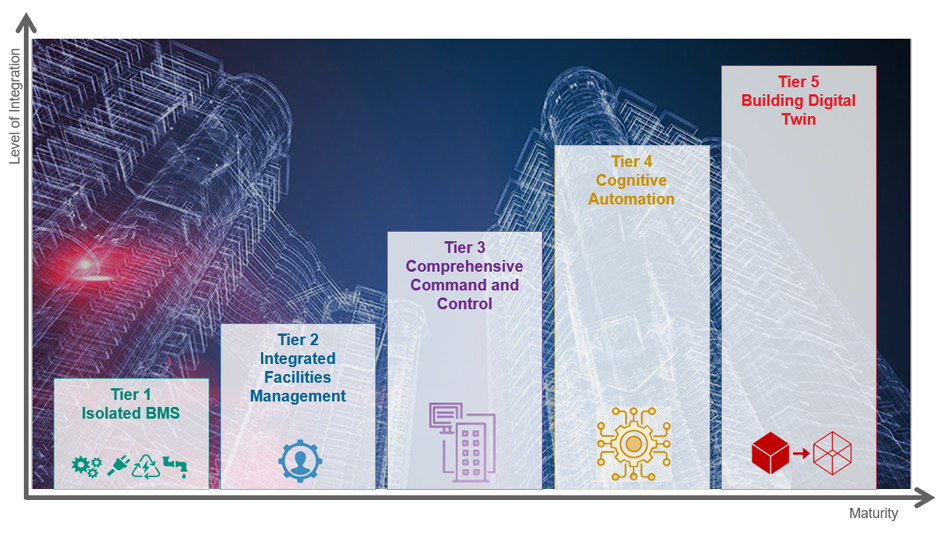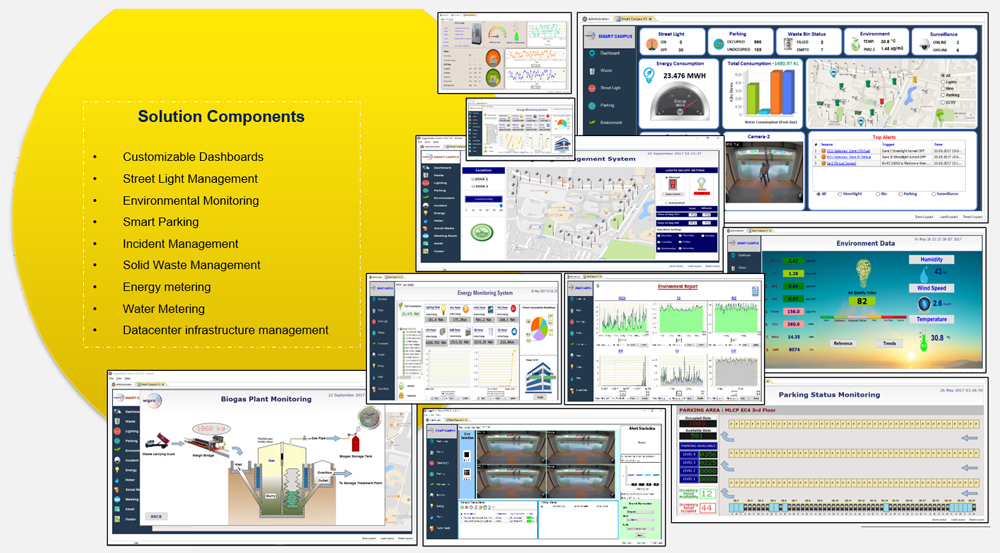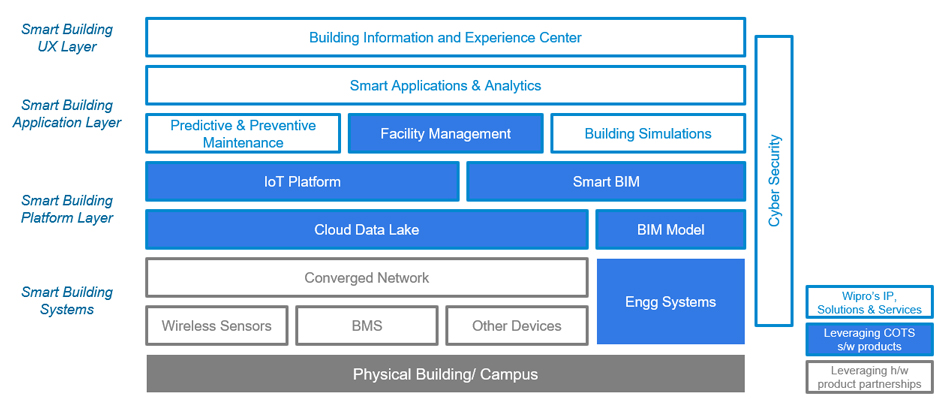There is a global effort underway to reduce the world’s carbon footprint. Buildings in particular, have a significant ecological footprint. In fact, approximately 40% of global energy consumption and 36% of CO2 emissions are attributable to building operations within the European Union. And, as urbanization increases, it is estimated that by 2050, 68% of the global population will live in urban areas resulting in even higher energy consumption and CO2 emissions.
The good news is that building efficiency can be driven by active control of different building systems. This is reflected in global climate change regulations, such as UN’s “Zero-Carbon Buildings for All”. These global initiatives are encouraging property owners and property managers to adopt technologies that enable better management of building operations. As sustainability becomes an integral part of the business and operating model of most organizations, the need to drive optimization and efficiencies across a building’s life cycle becomes even more important. Smart buildings offer a solution to meet these ambitious goals.
Smart Building is a Journey
Buildings in the future, or “smart buildings”, will connect the inherent structures, technologies, and systems in a more dynamic way. They will leverage technologies like IoT, BIM, IWMS, predictive analytics, and digital twin to drive various efficiency measures. Some organizations function out of shared commercial real estate; others an owned property. Regardless, there are different levers available for control and optimization of a building’s footprint. These levers can include automated energy optimization strategies, in-house renewable generation, waste management, water conservation, and many more.
While the need and drivers for smart buildings is evident, enabling the “smartness” in a building is an iterative journey. With each step in that journey, the building becomes smarter, more integrated, and more efficient. Taking an iterative approach allows companies to start the journey to match the organization’s level of maturity. It also gives companies a way to scale into smart building technology. There are five tiers to a smart building journey:

Figure 1: A smart building journey
Tier 1: Building Operations with Isolated Building Management Systems (BMS)
This is the state of most commercially operated buildings where each BMS is maintained and operated in isolation, leading to higher energy consumption, resource wastage, inefficient operations, and inadequate occupant experiences.
Tier 2: Building Operations with Integrated Facility Management
In this state, the BMS data is integrated with the facility management systems, to enable intelligent task allocation to building operators. For example, an anomaly detected in the plumbing or lighting systems will trigger a task to the appropriate operators to do the physical inspections and maintenance activities.
Tier 3: Building Operations with Comprehensive Command and Control
In this state, the BMS are monitored in unison within a single pane view. Alarms generated by each system are captured and brought to a central dashboard resulting in faster resolution of issues. It might also leverage a converged network to provide the necessary power and connectivity to individual systems.
Tier 4: Building Operations with Cognitive Automation
In this state, sensing, intelligence, and automation is built into the building structures to enable automated optimization and efficiency drives. For example, access control and CCTV systems can sense the number of people entering a property, which triggers the calculation for optimal HVAC settings, and feeds the new settings into the HVAC system. Alternatively, IoT sensors can monitor temperature and occupant presence in any part of the property and use that to drive the lighting and HVAC settings.
Tier 5: Building Operations with Digital Twin
All the previous tiers build up to tier 5, where there is a complete digital replica of the building. The data feeds come from BMS and IoT sensors. A building information model leverages the static data and dynamic feed to provide 3D visualizations with dynamic simulation options for HVAC, daylight analysis, energy simulation, people movement, and many more. The cognitive automation takes the result of the simulations, sends commands to the BMS or to the facility management system, and assigns personnel for tasks to be completed.
Wipro Electronic City Campus: An Example of a Smart Building Success
Wipro undertook a smart building journey, and achieved a tier 5 transformation in its Electronic City Campus in Bangalore to overcome challenges like inefficient building operations, energy consumption and wastage, and operational efficiency. As part of this initiative, Wipro created an integrated command and control center for monitoring BMS, utilities (power, water) and metering, smart lighting, solid waste management, environmental monitoring, smart parking, people and asset tracking, access control, visitor management, and datacenter infrastructure management, among others.

Figure 2: Electronic City Smart Campus application screenshots
In addition, Wipro integrated the journey for the Electronics City Industrial and Township Association. This transformation included a data and analytics platform that enabled integration, control, and monitoring of different subsystems like street light management, water metering, environmental monitoring, waste management, incident management, fleet management, e-toilets, CCTV surveillance, and smart parking. Overall, Wipro has already realized significant benefits with 30% reduction in operating costs and a considerably faster incident response time.
Framework to Enable Smart Buildings

Figure 3: Smart building framework
When embracing the smart building journey, an ecosystem approach is preferred to delivering individual parts of the journey as turnkey solutions. Wipro leverages its smart building framework across various types of engagements from consulting, to roadmap development, to solutions implementation. This framework can be leveraged to deliver different types of solutions across a variety of maturity levels. While each organization’s priorities will define different smart building initiatives, there are solutions and partnerships to enable functionality at any tier.
To achieve the global climate change initiatives, it will take every organization to embrace the goals and embark on a smart building journey. But like any journey, the best approach is to take one step, or tier, at a time.
Anirban Bannerjee
Product Manager, ER&D
Anirban has 8 years of expertise in delivering a variety of digital transformations. Anirban is focused across industries, delivering quality solutions to Fortune 500 customers in Industrial IOT, IT-OT integration, remote monitoring, and predictive maintenance with the goal to optimize cost and modernize the way to work.
Noël Croiger
Director Product Management, TRIRIGA
Noël has 25 years of expertise in product management, customer relationships, business analysis, sales, and business development. He has focused on delivering quality solutions to Fortune 500 customers in IOT, IWMS, smarter building, and predictive asset technologies. Noël is experienced in reducing costs by leading initiatives around acceleration tools, process methodology, training, automation, and IT solutions.